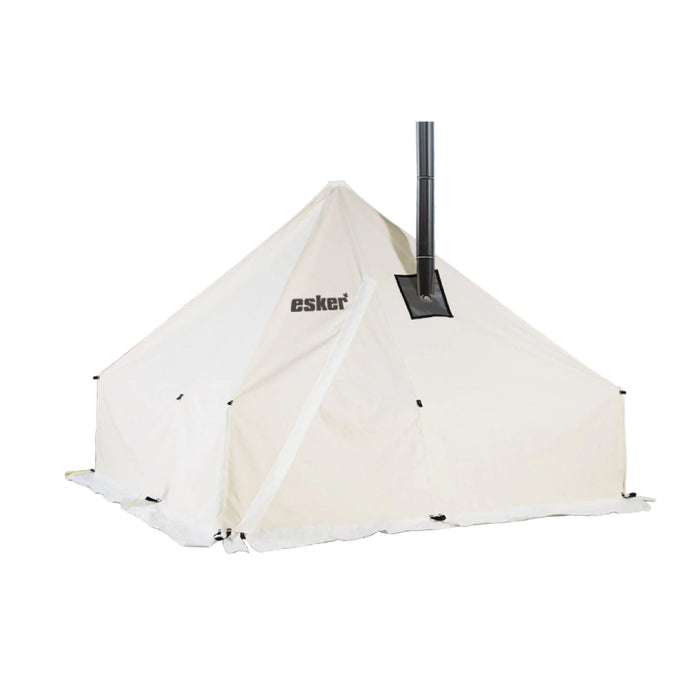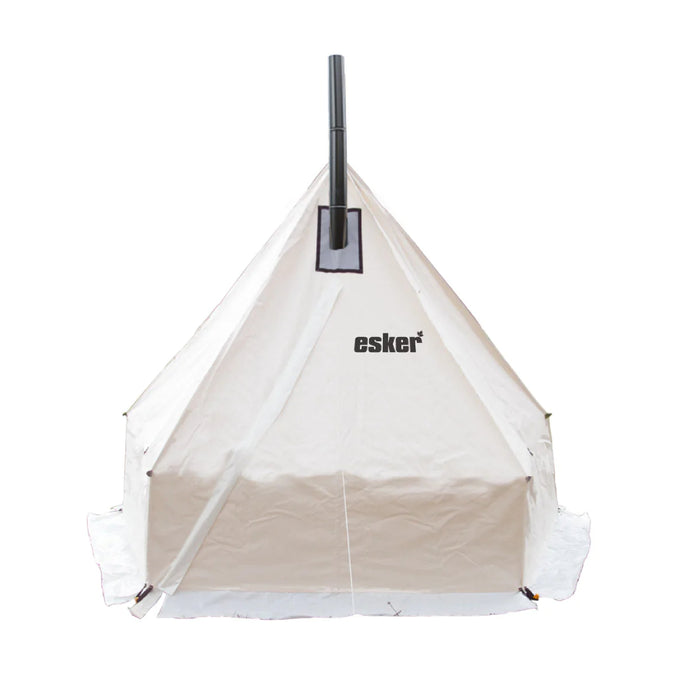
Exploring the Hot Tent Experience
At Canadian Preparedness, we understand the need for reliable and efficient camping solutions, especially in harsh conditions. The hot tent concept has gained popularity among outdoor enthusiasts, providing a unique combination of comfort and warmth. A hot tent allows campers to use a wood stove inside the tent, transforming a typical camping experience into a four-season adventure. The benefits extend beyond warmth, offering a sense of coziness while immersing yourself in nature's tranquility. Let’s explore the reasons why a hot tent might be the perfect addition to your camping gear.
Why Choose a Hot Tent?
A hot tent offers an array of advantages that make it an appealing choice for many campers. Primarily, the capability to safely use a stove inside the tent allows for effective heating, which is essential during cold-weather outings. This feature turns your tent into a comfortable retreat, even when temperatures drop significantly.
Additionally, hot tents are designed with robust materials to withstand various elements like wind, snow, and rain. This durability ensures a prolonged lifespan, giving any investment in a hot tent added value. Moreover, the ability to dry gear inside the tent proves invaluable, especially in wet or snowy environments, providing a dry sanctuary after a long day of exploration.
What Makes a Hot Tent Different?
The defining feature of a hot tent is its stove-ready capability, which means it includes a stove jack or port tailored for a stovepipe. This design feature distinguishes it from other tents as it allows for the safe installation and use of a wood stove. This significant difference elevates the camping experience, allowing you to extend your camping season into winter months comfortably.
Hot tents often come with high walls and spacious interiors to facilitate stove placement and maximize heat circulation. This structure not only organizes space efficiently but also improves ventilation when necessary. The inclusion of durable materials like canvas also ensures that hot tents remain breathable while preventing moisture build-up—keeping humidity at bay.
Key Features of a Hot Tent
Stove Jack
The stove jack is an essential component of any hot tent, allowing the stovepipe to safely exit the tent. Designed with heat-resistant materials, the stove jack ensures a secure plinth for the stove pipe, preventing the risk of fire or heat damage. This feature alone makes a hot tent distinct and invaluable for winter camping adventures.
Durable Construction
Hot tents are constructed with heavy-duty materials such as cotton canvas. These materials are not only robust but also breathable, minimizing condensation while providing excellent insulation. This durability means that a well-maintained hot tent can last for many camping seasons, making it a worthwhile investment.
Spacious Design
Hot tents are designed to offer ample space for both people and gear. This spaciousness is particularly beneficial when camping in inclement weather, allowing campers to keep gear dry and organized within the tent. It also provides sufficient room to move around comfortably, which is an important aspect when temperatures drop.
Setting Up Your Hot Tent
Setting up a hot tent requires some additional steps compared to a standard tent, mainly due to the inclusion of the stove. However, with some practice, it can be a straightforward process. Start by locating a flat, stable campsite that offers adequate protection from wind. Once the site is selected, lay out your tent and stake it down securely. Setting up the tent should be done before assembling and positioning the stove, ensuring stability.
The stove assembly typically follows, positioning it where the stovepipe can exit through the stove jack. It's crucial to maintain a safe distance between the stove and the tent's walls to avoid heat damage. Consider utilizing heat shields if necessary for added protection. Once set up, you can enjoy the warmth and comfort that a hot tent provides, making your cold-weather camping trip an enjoyable experience.
Remember, safety should always be a priority when using a stove inside a tent. Ensure proper ventilation to allow smoke and fumes to escape, and always have a plan in place for emergency stove shut-downs.
Pros and Cons of Hot Tents
While hot tents offer substantial benefits, there are also some considerations to keep in mind. One of the primary advantages is the ability to camp comfortably in cold weather, extending the camping season significantly. A hot tent provides a cozy warmth that enhances the overall camping experience, providing a refuge from the elements.
However, hot tents do come with increased weight and bulk compared to traditional tents. The stove and additional gear required can make transportation more cumbersome, necessitating careful packing and planning. Additionally, setting up a hot tent is often more complicated than a standard tent, requiring more time and effort to ensure proper safety measures are in place.
Despite these considerations, the unique benefits of a hot tent, such as warmth, comfort, and extended usability, often outweigh the drawbacks for many avid campers and survival enthusiasts.
Personal Insights and Anecdotes
As someone passionate about preparedness and survival, my experiences with hot tents have been overwhelmingly positive. One memorable adventure was a winter camping trip in the Rockies, where the temperatures plummeted unexpectedly. The hot tent allowed us to maintain a cozy, warm environment, transforming what could have been a challenging experience into a memorable one.
My personal recommendation? Always practice setting up your hot tent in a controlled environment first. This preparation ensures you can efficiently manage setup and stove operation when in the field. The extra effort pays off immensely when you’re enveloped in warmth, sharing stories, and enjoying a hot meal inside, while the snow falls silently outside.
Hot Tent Maintenance and Care
Proper maintenance of a hot tent is vital to ensure longevity and performance. After each use, it's advisable to thoroughly dry the tent before packing it away to prevent mold and mildew. Check for wear and tear, paying particular attention to seams, the stove jack, and zippers.
Cleaning your hot tent should be done with care, using mild soap and water when necessary. Avoid harsh detergents that could damage the tent fabric or negate any water-resistant treatments. Regularly inspecting and maintaining your stove, including cleaning out ashes and inspecting the stovepipe, also ensures safe operation on your next outing.
By maintaining vigilant care of your hot tent, you ensure many seasons of enjoyment and warmth, protecting your investment and enhancing your camping excursions.
Exploring Hot Tent Options
The market offers a variety of hot tents catering to different preferences and needs. From lightweight models ideal for backpacking to more robust and spacious options suited for base camping, there's something for every adventurer. At Canadian Preparedness, we prioritize quality and reliability, offering products that withstand the rigors of challenging environments.
Consider factors such as capacity, weight, and stove compatibility when selecting your hot tent. Doing so ensures you choose a tent that complements your camping style and enhances your outdoor experiences. Whether you’re venturing into the wilderness alone or with a group, the right hot tent can make all the difference in both comfort and safety.

Why is a hot tent essential for winter camping?
The allure of winter camping lies in its serene beauty and quiet landscapes, but the cold can be daunting. A hot tent transforms this chilly environment into a warm refuge, thanks to its stove-ready design. By facilitating the installation of a wood stove inside, it keeps your living space cozy and toasty, allowing you to extend the camping season comfortably. Imagine returning from a day of exploring snow-covered trails to the comforting warmth of a hot tent. This feature not only enhances comfort but also ensures safety by providing a reliable heat source, reducing the risks associated with extreme cold. Have you ever experienced the warmth of a hot tent on a crisp winter night?
How does a hot tent differ from standard tents?
The primary distinction lies in the hot tent's stove jack—a specialized port that allows for safe stovepipe installation. This modification turns a regular tent into a haven of warmth. High walls and spacious interiors are also common, optimizing heat distribution and ventilation. Unlike typical tents that might struggle with condensation, the canvas material of hot tents is both durable and breathable. This keeps moisture at bay, creating a pleasant environment inside. Have you considered how a hot tent fits into your current camping setup?
What are some key benefits of using a hot tent?
A hot tent offers unmatched comfort during cold-weather outings. The ability to dry gear inside after a long, wet day is invaluable, and the durable construction ensures it withstands harsh elements like wind and snow. This durability adds value by extending the tent's lifespan, making it a smart investment for avid campers. The inclusion of a stove also allows you to cook inside, enhancing the rustic camping experience. With these advantages, a hot tent can notably improve the quality of your outdoor adventures. Have you weighed the advantages of a hot tent against its increased weight and setup time?
How can you safely set up and maintain a hot tent?
Setting up a hot tent involves careful planning. Begin by choosing a sheltered, flat spot to pitch your tent, ensuring stability. Once your tent is up, position the stove so the stovepipe exits safely through the stove jack. Keep a safe distance between the stove and tent walls, and consider using heat shields for additional protection. Proper ventilation is crucial to avoid smoke buildup. After each use, dry your tent thoroughly to prevent mold, and inspect for any wear, especially around the stove jack and seams. Regular maintenance of your stove, including cleaning and inspection, ensures safety and efficiency during your next camping excursion. What are some quick checks you might do before heading out on your next winter camping trip?
Are hot tents suitable for all types of campers?
Hot tents are perfect for those who prioritize comfort and warmth in cold climates. While they offer significant benefits, such as an extended camping season and a cozy atmosphere, they might not appeal to everyone due to their bulk and setup complexity. Backpackers seeking lightweight gear might find them cumbersome, whereas car campers or those setting up a base camp will appreciate the added comfort. Your camping style and priorities will largely dictate whether a hot tent suits your needs. Have you thought about how a hot tent might change your camping style?
Resources
- National Park Service - The National Park Service offers a wealth of information on camping in national parks, including reservation systems, park regulations, and Leave No Trace principles.
- REI Camping Skills - REI's camping skills section provides expert advice on various camping topics, including gear selection, campsite setup, and outdoor cooking tips.
- American Hiking Society - The American Hiking Society offers resources for hikers of all skill levels, including trail etiquette, safety guidelines, and tips for planning hiking trips.
- USDA Forest Service Trails - The USDA Forest Service Trails webpage provides information on hiking trails, trail maintenance, and trail safety in national forests.

